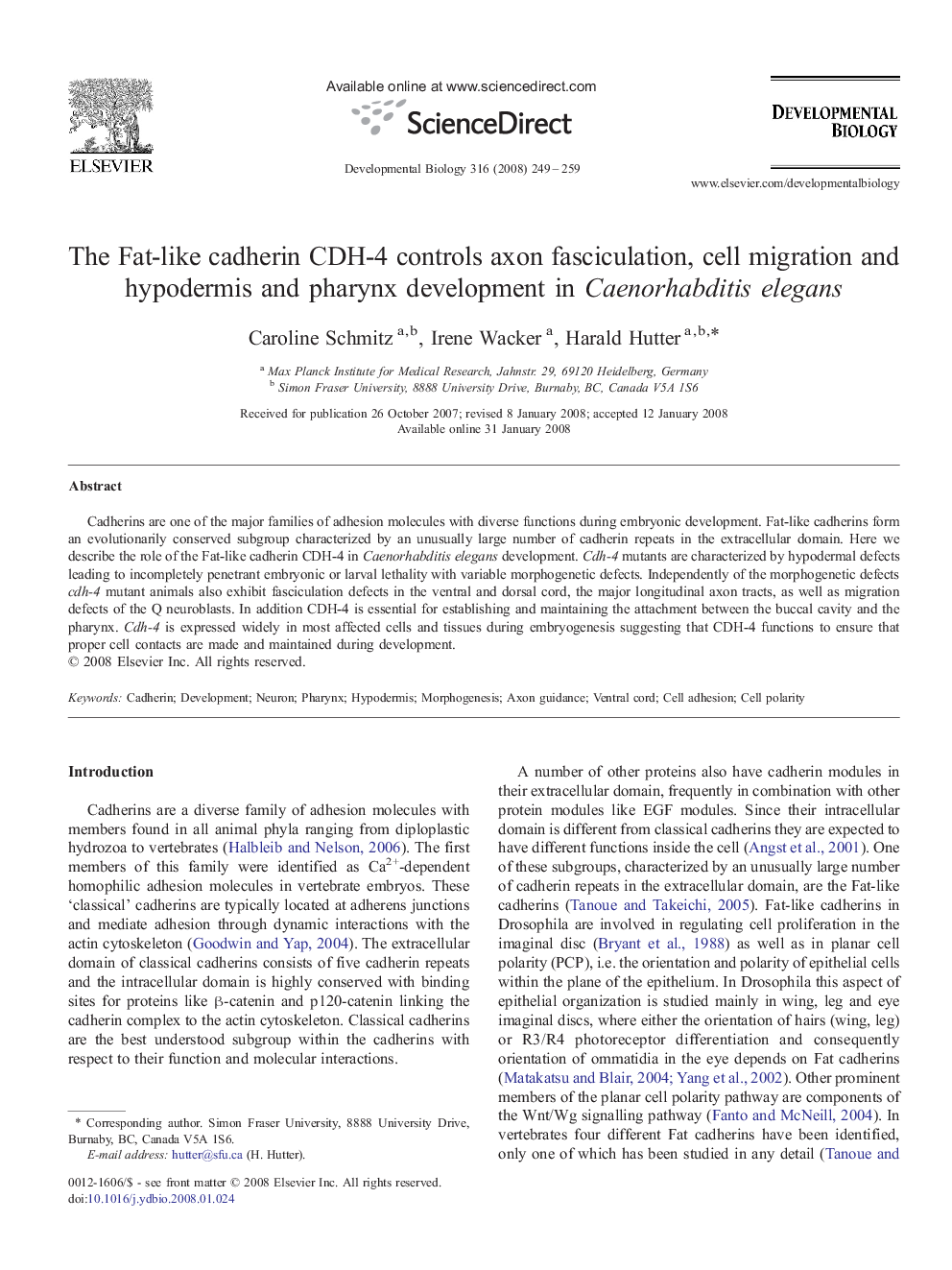| Article ID | Journal | Published Year | Pages | File Type |
|---|---|---|---|---|
| 10933715 | Developmental Biology | 2008 | 11 Pages |
Abstract
Cadherins are one of the major families of adhesion molecules with diverse functions during embryonic development. Fat-like cadherins form an evolutionarily conserved subgroup characterized by an unusually large number of cadherin repeats in the extracellular domain. Here we describe the role of the Fat-like cadherin CDH-4 in Caenorhabditis elegans development. Cdh-4 mutants are characterized by hypodermal defects leading to incompletely penetrant embryonic or larval lethality with variable morphogenetic defects. Independently of the morphogenetic defects cdh-4 mutant animals also exhibit fasciculation defects in the ventral and dorsal cord, the major longitudinal axon tracts, as well as migration defects of the Q neuroblasts. In addition CDH-4 is essential for establishing and maintaining the attachment between the buccal cavity and the pharynx. Cdh-4 is expressed widely in most affected cells and tissues during embryogenesis suggesting that CDH-4 functions to ensure that proper cell contacts are made and maintained during development.
Keywords
Related Topics
Life Sciences
Biochemistry, Genetics and Molecular Biology
Cell Biology
Authors
Caroline Schmitz, Irene Wacker, Harald Hutter,
